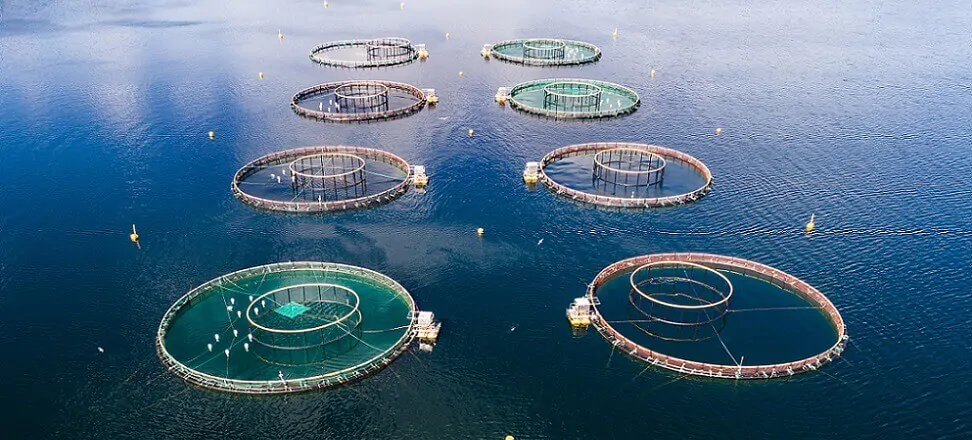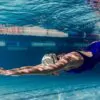Feedback
Does aquaculture have a negative impact on water quality?
Aquaculture is an intensely growing industry, involving the rearing and cultivation of organisms that live in water. The global output of this area of the economy reached a record high in 2020. At the time, its value was estimated at $281 billion. There are many indications that as production scales up, by 2030. It will be valued at more than $300 billion. This trend is of interest not only to industry professionals. More and more people are wondering whether aquaculture is negatively affecting water quality. It turns out that the answer to this question is not clear-cut.
Aquatic organism production – an opportunity or a curse for the food sector?
Global consumption of aquatic organisms has been growing steadily for more than sixty years. The parameter since the first half of the 1960s. The last century doubled its value. Currently, the average annual consumption of this product group is 20 kg per person. Moreover, the upward trend is estimated to continue for the next several decades. This has to do, among other things, with the increasing interest in animal products and the greater availability of such foods.
Even if the average level of consumption of aquatic organisms stabilizes, demand for aquaculture products will increase. This has to do with the growing population of humanity, which By 2050. may reach 9.7 billion people. Therefore, increasing the scale of food industry production is a necessity. With aquaculture, it will be possible to cope with the coming realities. However, the development of large-scale production of aquatic organisms must be carried out with respect for the natural environment. Otherwise, the activity will have a significant negative impact on water quality.
Aquaculture development and aquatic environment protection
One of the main directions of aquaculture development is the intensification of animal production, mainly fish and invertebrates. This trend could have a significant impact on water quality, both in a local and global context. Aquaculture can contribute to environmental devastation if producers do not use responsible technologies and systems to manage operations. Nevertheless, environmentally sustainable strategies are constantly being developed that can be a tool for mass production of organic food. The direction of aquaculture largely depends on global standards regulated by international law and consumer behavior. Therefore, it is useful to know when aquaculture has a negative impact on water quality, and when the production of aquatic organisms can be considered organic.
Aquaculture not equal to aquaculture
Activities aimed at producing aquatic organisms can take many forms. Depending on the technology used, management systems and the animal or plant species kept, two main types of aquaculture can be distinguished. They differ on a number of issues, but the most significant – from an environmental perspective – is the impact on water quality.
- Extensive aquaculture involves raising and breeding aquatic organisms at low densities. Most often in ponds or natural reservoirs. Fish kept in this system use only the natural resources of the aquatic environment or (depending on the fertility of the reservoir) can be fed, such as cereals and legumes. Extensive aquaculture is referred to as organic because livestock production in this system does not generate large amounts of nitrogen and phosphorus compounds into the environment.
- Intensive aquaculture involves the highly efficient production of aquatic organisms using advanced technologies and an optimized feeding system based on extruded complete feeds. In this system, maintaining a high density of animals is key. As a result, post-production waste contains a high concentration of nitrogen and phosphorus compounds, which has a negative impact on water quality.
Characteristics of aquaculture tailings
Wastes generated by the rearing of aquatic organisms take the form of suspended solids or sludge. They consist primarily of organic matter in the form of animal feces, feed remains and the remains of dead flora and fauna. Aquaculture tailings also include residues of substances used during animal production, such as antibiotics and other pharmaceuticals, and disinfectants.
The main feature of the described mixtures, resulting from the production of aquatic organisms, is high nitrogen and phosphorus content. These are biogenic elements that naturally occur in the aquatic environment. However, when their concentration is too high, processes occur that result in a decline in environmental water quality. Moreover, given the ever-increasing scale of aquaculture production, even trace amounts of pharmaceuticals in post-production wastewater are a serious concern.
Production of aquatic organisms and eutrophication of waters
Aquaculture by-products, containing high concentrations of nitrogen and phosphorus, are a potential threat with negative effects on water quality. The infiltration of excess of these elements into the environment leads to an increase in water fertility. As a result of this phenomenon, massive algal and cyanobacterial blooms occur, blocking the penetration of sunlight to the lower parts of the water bodies.
Another consequence of water survival is the death of aquatic plants and the formation of anaerobic zones. These are conditions good for the growth of microorganisms that produce toxic compounds, an excess of which results in adverse changes in water parameters. However, it is worth noting that aquaculture is only one of the many activities that affect the appearance of excess nitrogen and phosphorus compounds in the environment. From a global perspective, the largest source of these elements is wastewater runoff from agricultural fields.
Do pharmaceuticals used in aquaculture affect water quality?
One solution that has made it possible to increase aquaculture productivity is the use of antibiotics for non-therapeutic purposes. In animal production, some antibacterial pharmaceuticals are used as growth promoters, which has greatly increased their consumption. At the beginning of the 21st century. Producers of animals kept for consumption used more than 105,000. t antibiotics. More than 90 percent. of this type of practice is taking place in China, which is a world power in the intensive production of aquatic organisms.
Antibiotics used in aquaculture can be particularly dangerous because of the way they are used. Some of them are fed with feed, which in most cases is immediately taken up by the animals. However, some pharmaceuticals are added directly to water, thus creating solutions that eventually end up in the environment, with destructive effects on wild aquatic organisms. The problem is not only the negative impact on water quality. This phenomenon is a potential threat to public health. This mechanism does not apply only to the production of aquatic organisms, but also to the raising and breeding of livestock. European law prohibits the use of antibiotics as growth promoters, but it is important to remember that the biggest influence on the global situation comes from key producers, primarily China.
For years, numerous groups of scientists have been working on improving alternatives to intensify aquaculture production without the use of antibiotics. These include health-promoting feed additives in the form of symbiotics and other substances that improve the functioning of the immune system of aquatic animals, and breeding work aimed at consolidating traits that adapt animals to life in high densities.
Aquaculture development takes good direction
Aquaculture, like any other food industry, affects the environment in a variety of ways. However, the past few years have seen an intense escalation of technologies that are moving the industry toward sustainability. In the context of neutralizing aquaculture by-products, bioremediation is proving useful. This technology makes it possible to convert sludge with high nitrogen and phosphorus content into less environmentally harmful forms. For this purpose, the natural abilities of selected microorganisms are used.
This strategy has been successfully used at municipal wastewater treatment plants for years. There are many indications that it will perform equally well in neutralizing by-products from intensive aquaculture. Improving the management system for potentially harmful waste seems to be a solution to ensure that aquaculture will no longer have a negative impact on water quality. In view of the facts presented, in the future aquatic farming and breeding may be one of the main sources of high-quality organic food.
In the article, I used, among others. From the works:
- Boyd C.E., D’Abramo L.R., Glencross B.D., Huyben D.C., Juarez L.M., Lockwood G.S., …. & Valenti W.C. (2020). Achieving sustainable aquaculture: Historical and current perspectives and future needs and challenges. Journal of the World Aquaculture Society, 51(3), 578-633.
- Jasmin M.Y., Syukri F., Kamarudin M.S., Karim M. (2020). Potential of bioremediation in treating aquaculture sludge. Aquaculture, 519, 734905.
- Stentiford G.D., Bateman I.J., Hinchliffe S.J., Bass D. 1., Hartnell R., Santos E.M., … & Tyler C.R. (2020). Sustainable aquaculture through the One Health lens. Nature Food, 1(8), 468-474.
- The state of world fisheries and aquaculture (2022). Food and Agriculture Organization of the United Nations.
- Santos L., Soares B., Rosa J., Freitas A., Leston S., Barbosa J., Ramos F. (2016). Detection and quantification of 41 antibiotic residues in Gilthead Sea Bream (Sparus aurata) from aquaculture origin, using a multiclass and multi-residue UHPLC-MS/MS method. Food Analytical Methods, 9, 2749-2753.
- Song C., Zhang C., Kamira B., Qiu L., Fan L., Wu W., …. & Chen J. (2017). Occurrence and human dietary assessment of fluoroquinolones antibiotics in cultured fish around Tai Lake, China. Environmental toxicology and chemistry, 36(11), 2899-2905.
- Li W., Shi Y., Gao L., Liu J., Cai Y. (2012). Occurrence of antibiotics in water, sediments, aquatic plants, and animals from Baiyangdian Lake in North China. Chemosphere, 89(11), 1307-1315.
- Hossain A., Nakamichi S., Habibullah-Al-Mamun M., Tani K., Masunaga S., Matsuda H. (2017). Occurrence, distribution, ecological and resistance risks of antibiotics in surface water of finfish and shellfish aquaculture in Bangladesh. Chemosphere, 188, 329-336.
- He X.T., Wang Q., Nie X.P., Yang Y.T., Cheng Z. (2014). Residues and health risk assessment of sulfonamides in sediment and fish from typical marine aquaculture regions of Guangdong Province, China. Huan Jing ke Xue= Huanjing Kexue, 35(7), 2728-2735.
- Newaj-Fyzul A., Austin B. (2015). Probiotics, immunostimulants, plant products and oral vaccines, and their role as feed supplements in the control of bacterial fish diseases. Journal of fish diseases, 38(11), 937-955.
- Defoirdt T., Sorgeloos P., Bossier P. (2011). Alternatives to antibiotics for the control of bacterial disease in aquaculture. Current Opinion in Microbiology, 14(3), 251-258.

 Polski
Polski







